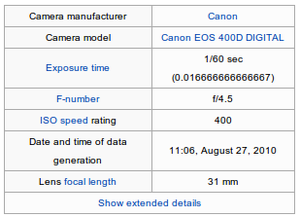Digital forensics
Digital Forensics is the branch of forensic science that focuses on the recovery and investigation of material found in digital devices, often in relation to computer crime. The term digital forensics was originally used as a synonym for computer forensics but has expanded to cover investigation of all devices capable of storing digital data. With roots in the personal computing revolution of the late 20th century, digital forensics has evolved into a significant tool for solving crimes in the digital age.
History
Digital forensics has its roots in the development of personal computing and the need for recovering data from computer systems. The field began to take shape in the early 1980s with the rise of personal computers and the need for law enforcement to access and evaluate digital evidence. As technology advanced, so did the scope of digital forensic investigations, expanding to include mobile devices, networks, and cloud computing environments.
Branches
Digital forensics can be divided into several branches, depending on the type of digital device involved or the nature of the investigations:
- Computer Forensics: Focuses on the recovery of data from computer systems and storage devices.
- Mobile Device Forensics: Deals with the recovery of data from mobile devices like smartphones and tablets.
- Network Forensics: Involves monitoring and analyzing computer network traffic for the purposes of information gathering, legal evidence, or intrusion detection.
- Forensic Data Analysis: A branch of digital forensics that deals with the identification, collection, and analysis of large volumes of data to find patterns, reconstruct events, and provide insights.
- Cloud Forensics: Pertains to the principles and practices of recovering digital evidence from within a cloud computing environment.
Process
The digital forensic process typically involves the following steps:
- Preservation: The first step involves isolating, securing, and preserving the data.
- Acquisition: Data is then acquired from digital devices, ensuring that the information is not altered during the process.
- Analysis: The acquired data is analyzed to identify relevant information that may serve as evidence.
- Documentation: The entire process, findings, and conclusions are documented in a detailed report.
- Presentation: The evidence and the report are presented in a legal context, often in court.
Challenges
Digital forensics faces several challenges, including the rapid evolution of technology, encryption, large volumes of data, and the use of cloud services. Forensic experts must continuously update their skills and tools to keep pace with new technologies.
Ethical Considerations
Digital forensic investigators are bound by ethical considerations, including respect for privacy and the lawful acquisition of data. They must operate within the legal framework and ensure that their methods and practices do not infringe on individuals' rights.
Tools and Techniques
A variety of tools and techniques are used in digital forensics, ranging from software applications that can recover deleted files to sophisticated systems that can analyze large volumes of network traffic. The choice of tools depends on the specific requirements of the investigation.
Future of Digital Forensics
The future of digital forensics is likely to see advancements in artificial intelligence and machine learning to handle the increasing complexity and volume of digital evidence. The field will continue to evolve as new technologies emerge and become integrated into society.
Transform your life with W8MD's budget GLP-1 injections from $125.
W8MD offers a medical weight loss program to lose weight in Philadelphia. Our physician-supervised medical weight loss provides:
- Most insurances accepted or discounted self-pay rates. We will obtain insurance prior authorizations if needed.
- Generic GLP1 weight loss injections from $125 for the starting dose.
- Also offer prescription weight loss medications including Phentermine, Qsymia, Diethylpropion, Contrave etc.
NYC weight loss doctor appointments
Start your NYC weight loss journey today at our NYC medical weight loss and Philadelphia medical weight loss clinics.
- Call 718-946-5500 to lose weight in NYC or for medical weight loss in Philadelphia 215-676-2334.
- Tags:NYC medical weight loss, Philadelphia lose weight Zepbound NYC, Budget GLP1 weight loss injections, Wegovy Philadelphia, Wegovy NYC, Philadelphia medical weight loss, Brookly weight loss and Wegovy NYC
|
WikiMD's Wellness Encyclopedia |
| Let Food Be Thy Medicine Medicine Thy Food - Hippocrates |
Medical Disclaimer: WikiMD is not a substitute for professional medical advice. The information on WikiMD is provided as an information resource only, may be incorrect, outdated or misleading, and is not to be used or relied on for any diagnostic or treatment purposes. Please consult your health care provider before making any healthcare decisions or for guidance about a specific medical condition. WikiMD expressly disclaims responsibility, and shall have no liability, for any damages, loss, injury, or liability whatsoever suffered as a result of your reliance on the information contained in this site. By visiting this site you agree to the foregoing terms and conditions, which may from time to time be changed or supplemented by WikiMD. If you do not agree to the foregoing terms and conditions, you should not enter or use this site. See full disclaimer.
Credits:Most images are courtesy of Wikimedia commons, and templates, categories Wikipedia, licensed under CC BY SA or similar.
Contributors: Prab R. Tumpati, MD





